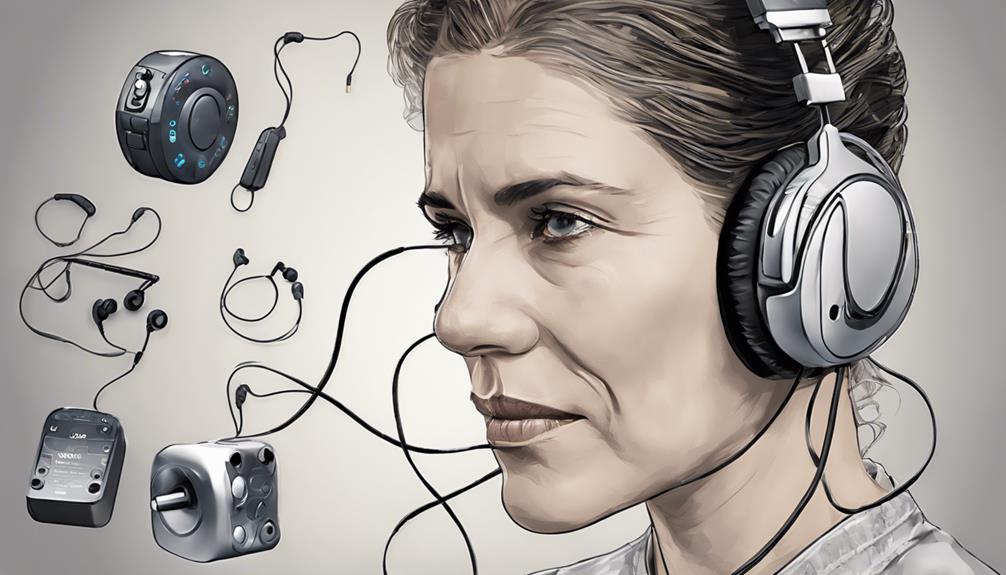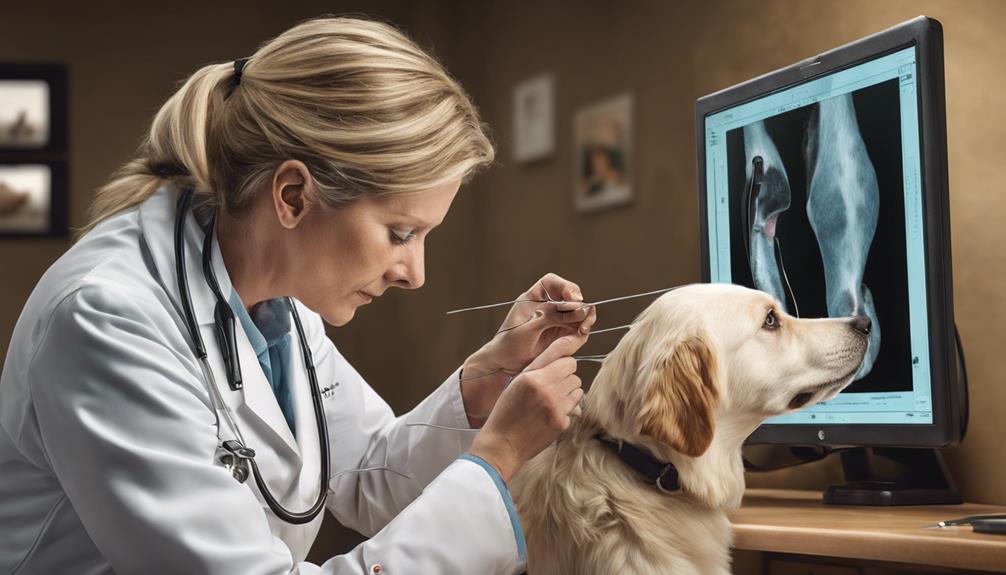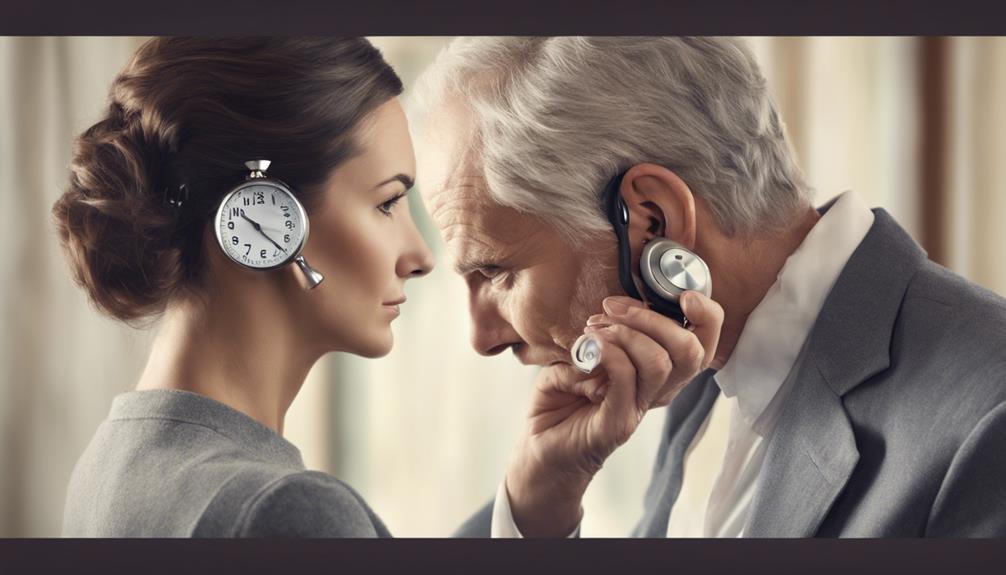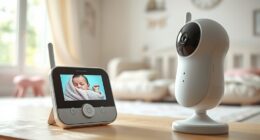Assistive Listening Devices provide a subtle way to improve audio experiences in different environments. Ranging from small devices that boost sound to advanced systems that minimize background noise, ALDs accommodate a broad spectrum of hearing requirements.
But what are the key considerations when selecting the right device for your specific requirements? Let's explore the nuances of ALDs and how they can significantly impact daily interactions and communication.
Key Takeaways
- ALDs enhance speech clarity and quality of life significantly.
- Choosing the right ALD involves considering environment, guidance, and personal preferences.
- Effective ALD use requires proper positioning, volume adjustment, and familiarity with features.
- Maintain ALDs by cleaning, checking batteries, proper storage, and following manufacturer instructions.
What Are Assistive Listening Devices?
Assistive Listening Devices, also known as ALDs, are sophisticated personal technologies designed to enhance hearing capabilities for individuals with hearing loss in various environments. These devices, such as pocket talkers and wireless FM systems, amplify sound and filter out background noise, making communication more accessible. ALDs are particularly helpful in noisy settings like family gatherings or public events, where background noise can interfere with hearing aids or cochlear implants.
These devices play a crucial role in improving communication for people with hearing loss, allowing them to participate more fully in daily activities. ALDs can be used independently or in conjunction with hearing aids or cochlear implants to enhance sound clarity. By utilizing ALDs, individuals with hearing loss can overcome the challenges posed by background noise and have more meaningful interactions. This technology is essential for ensuring that people with hearing impairments have equal access to sound and can engage effectively in various listening environments.
Types of ALDs
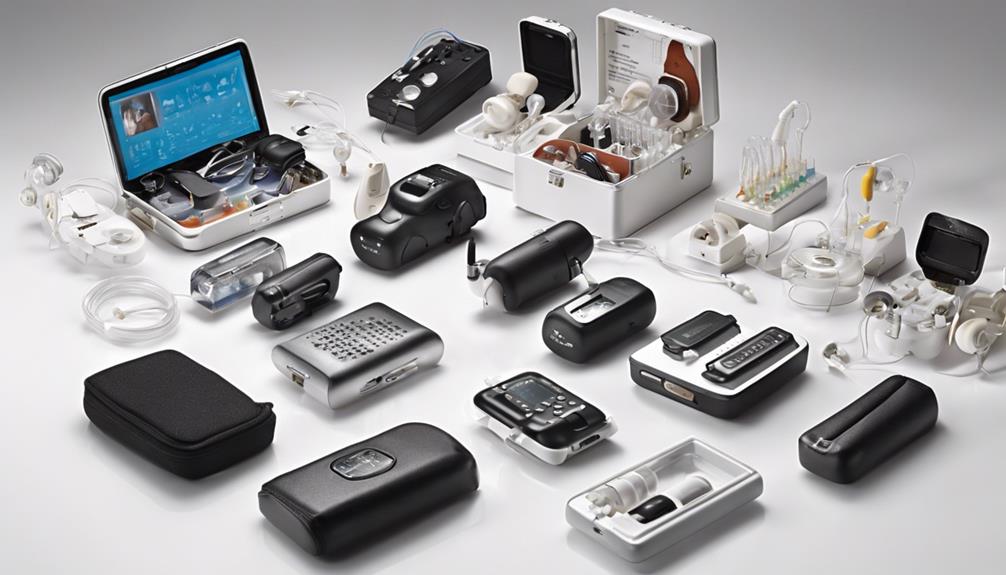
Moving from understanding what ALDs are, the focus now shifts to exploring the various types of devices that fall under this category. Common types of ALDs include personal amplifiers, FM systems, infrared systems, and hearing loops. Personal amplifiers, such as the Pocketalker, bring sound closer to the ears, enhancing clarity significantly.
FM systems utilize radio waves to transmit sound directly to the listener, effectively reducing background noise for improved listening experiences. Infrared systems, on the other hand, transmit sound using light signals, making them ideal for maintaining privacy in smaller spaces.
Additionally, hearing loop systems employ electromagnetic fields to connect with telecoil-equipped hearing aids, resulting in enhanced sound reception for individuals wearing these devices. Each type of ALD operates using distinct mechanisms – whether through radio waves, light signals, or electromagnetic fields – to cater to varying needs and environments, ultimately providing users with improved sound reception in diverse settings.
Benefits of ALDs
When considering the advantages of ALDs, one immediately recognizes their significant impact on improving speech understanding for those experiencing hearing loss. These devices can enhance speech understanding by 15-25 dB, bringing individuals closer to the communication effectiveness of those with normal hearing.
Moreover, ALDs complement the function of hearing aids and cochlear implants, extending their utility in various listening environments. In educational settings, ALDs play a crucial role in addressing listening challenges, ensuring that individuals with hearing loss have equal access to information and communication.
It's worth noting that providing ALS receivers at no cost in public places isn't only beneficial but is also a requirement under ADA guidelines. By leveraging the benefits of ALDs, individuals with hearing loss can significantly improve their overall communication experience and quality of life.
Choosing the Right ALD
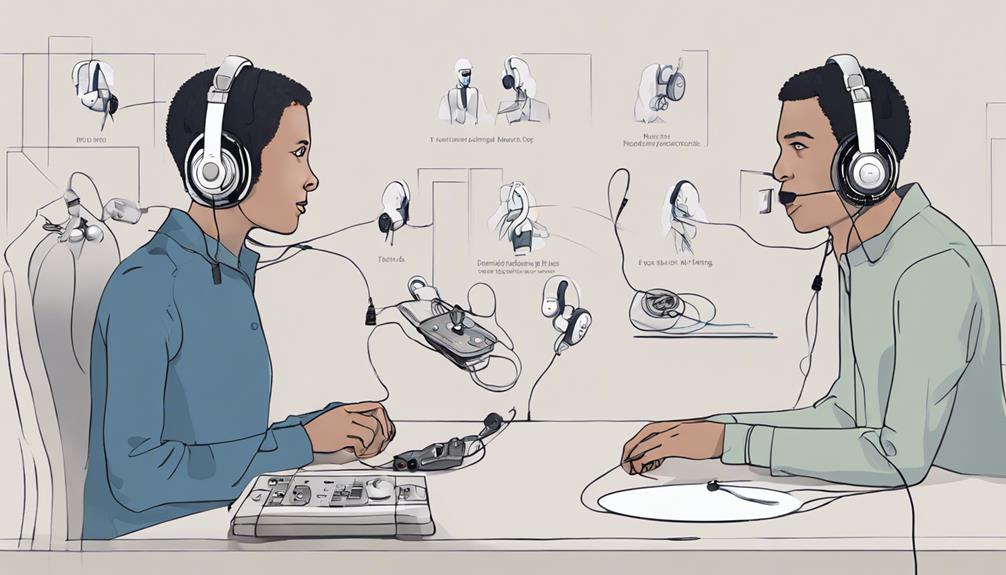
Considering an individual's hearing needs and preferences is crucial when selecting the right Assistive Listening Device (ALD) for optimal communication enhancement. It's important to assess the environment where the ALD will be used to determine the most suitable technology. Consulting with audiologists or hearing healthcare professionals can provide valuable guidance on choosing the right ALD. Testing different ALDs is essential to find the one that offers the best clarity and comfort for the user.
When choosing an ALD, look for features like adjustable volume, tone control, and compatibility with hearing aids if needed. These features can significantly enhance the user's experience and ensure that the device meets their specific requirements. By considering the individual's preferences, hearing needs, and the technological capabilities of different ALDs, you can select a device that will effectively improve communication in various settings. Remember that clarity and comfort are key factors to prioritize when choosing the right ALD.
Using ALDs Effectively
When using ALDs, position the microphone near the source of sound for optimal reception. Adjust the volume on the receiver to a level that's both comfortable and clear.
Familiarize yourselves with the specific features and controls of your ALD device to maximize its effectiveness.
Proper ALD Placement
To effectively utilize assistive listening devices, ensuring proper placement near the sound source is crucial for optimal reception and clarity. Placing the ALD microphone close to the speaker's mouth enhances speech clarity while reducing background noise interference, leading to improved ALD effectiveness.
It's essential to wear or position ALDs correctly to maximize their ability to transmit sound effectively. Following manufacturer guidelines for ALD placement can significantly benefit individuals with hearing loss by enhancing sound amplification and clarity.
Adjusting ALD Volume
Positioning the ALD microphone optimally near the sound source is essential for clear reception and speech clarity, and now, adjusting the volume on ALDs is crucial to ensure comfortable and effective sound amplification. When adjusting the volume on ALDs, consider your hearing needs and aim to amplify sounds without distortion. Experiment with different volume levels to find the ideal setting for various environments. Ensure the volume is loud enough for you to hear clearly but not so loud as to cause discomfort or potential damage. Seek guidance from professionals or user manuals to properly adjust the volume on ALDs for optimal performance.
| Volume Adjustment Tips | |
|---|---|
| Consider Hearing Needs | |
| Avoid Distortion | |
| Experiment with Levels | |
| Seek Professional Help | |
| Ensure Comfort |
Maintaining Your ALD
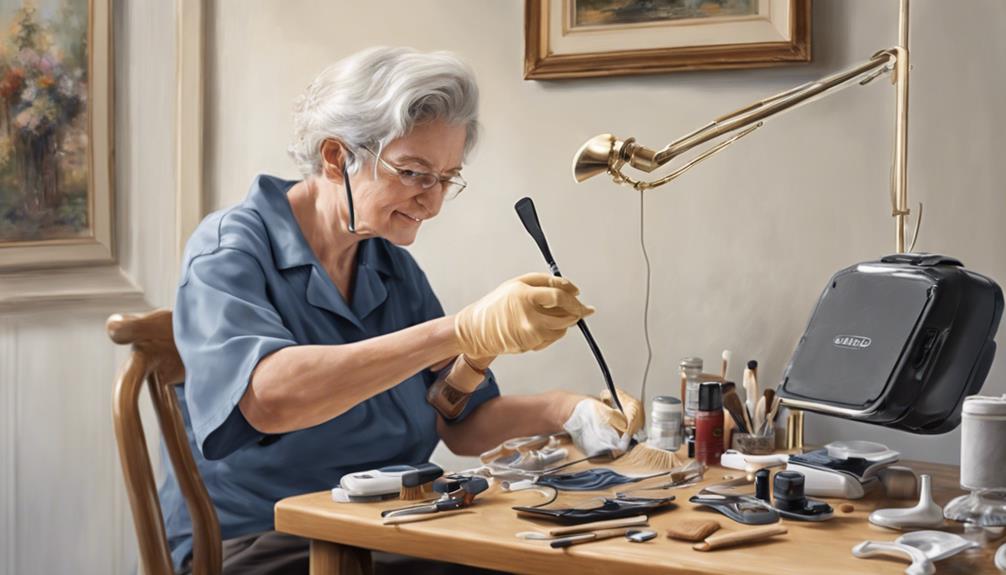
Proper maintenance of your ALD is essential for optimal performance and longevity. To ensure your device functions effectively, it's crucial to regularly clean its components to prevent debris buildup that can hinder performance. Additionally, checking the batteries or power source frequently is vital to guarantee the ALD operates at its best.
When not in use, store the ALD in a safe and dry place to prevent any damage or corrosion. Following the manufacturer's instructions for maintenance and troubleshooting is key to addressing any issues promptly and accurately. If you encounter difficulties with your ALD that you can't resolve on your own, seek professional assistance. Professionals may offer specialized repair or calibration services to rectify the problem efficiently.
Frequently Asked Questions
What Is an Assistive Listening Device?
Assistive listening devices are personal technologies that assist individuals with hearing loss in various situations. They often include handheld amplifiers with microphones to bring sound closer and filter background noise.
Examples are Pocketalker devices and wireless FM systems that enhance sound clarity in noisy environments. Beneficial for those with mild to profound hearing loss, these devices improve communication and quality of life in settings like family gatherings and one-on-one conversations.
How Do Listening Devices Work?
Listening devices work by capturing sound, amplifying it, and delivering it directly to our ears. They utilize technologies like microphones, speakers, and amplifiers to enhance sound clarity and volume.
These devices cater to various degrees of hearing loss and environments, aiding in better hearing in noisy settings or when struggling with distance or clarity. They can be used alone or with hearing aids for personalized sound amplification.
Where Are Assistive Listening Devices Required?
Assistive listening devices are required in public places under Title III of the ADA to ensure accessibility for individuals with hearing loss. Businesses and venues must provide these devices, unless proven as an undue burden.
Public places like theaters, classrooms, and stadiums are required to offer assistive listening devices to comply with ADA guidelines. This mandate aims to guarantee equal access to communication for individuals with hearing impairments.
What Is the Most Commonly Used Type of Assistive Listening System in Educational Settings?
In educational settings, the most commonly used type of assistive listening system is the FM system. These systems utilize radio waves to transmit sound directly to a receiver worn by individuals with hearing loss.
They excel in overcoming background noise and distance issues, ensuring clear communication between teachers and students with hearing impairments. Studies have shown that FM systems significantly enhance academic performance and participation for students with hearing loss.
Conclusion
In conclusion, assistive listening devices play a crucial role in improving communication for individuals with hearing loss. By amplifying sound and reducing background noise, these devices enhance clarity and quality of life in various environments.
It's essential to choose the right ALD based on individual needs and preferences to maximize their benefits.
Through continuous advancements and research, the effectiveness of ALDs continues to evolve, providing innovative solutions for individuals with hearing difficulties.

